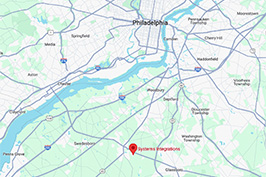Securing the Future: Integrating Cybersecurity into Physical Security
Protecting assets and people remains a top priority for security professionals. However, the landscape of physical security is evolving rapidly, driven by technological advancements and rising expectations. Today, organizations need solutions that not only address current security challenges but also adapt to future needs.
The Rise of Cloud-Based Physical Security
Cloud-based solutions are transforming the physical security industry, offering greater flexibility, scalability, and advanced functionality compared to traditional on-premises systems. These solutions enable seamless integration across multiple locations, remote access to security systems, and powerful analytics capabilities.
However, this shift to the cloud also introduces new cybersecurity risks. As physical security systems become increasingly interconnected and data-driven, protecting sensitive information from cyber threats is paramount.
Cybersecurity: An Integral Part of Physical Security
Our recent State of Modern Physical Security Report revealed that 77% of physical security professionals consider cybersecurity a high or very high priority. This recognition highlights the growing need to integrate cybersecurity measures into physical security solutions.
Legacy on-premises systems often rely on insecure practices like port forwarding to enable remote access, creating vulnerabilities that can be exploited by malicious actors. In contrast, cloud-based solutions offer secure, native remote access for cameras, IoT sensors, and access control systems.
Data Security: The Foundation of Innovation
Cloud platforms, while offering numerous advantages, also present cybersecurity challenges. Protecting data, including personally identifiable information (PII), from cyberattacks is crucial. Failure to do so can result in significant consequences, including regulatory sanctions and reputational damage.
Best Practices for Secure Cloud-Based Physical Security
To mitigate cybersecurity risks, organizations should adopt a proactive approach and implement best practices, including:
- Encryption: End-to-end encryption of all media is essential to protect data in transit and at rest.
- Authentication: Robust authentication mechanisms, such as mutual authentication and two-factor authentication (2FA), should be implemented to prevent unauthorized access.
- Audits: Regular third-party audits can help ensure the effectiveness of cybersecurity initiatives and identify potential vulnerabilities.
- Automation: Automating tasks like firmware updates and health monitoring can improve efficiency and reduce the risk of human error.
- Access Controls: Strict access control policies, including granular permissions and role-based access, should be enforced to limit access to sensitive data.
Compliance is Key
In addition to best practices, organizations must also comply with relevant regulations and standards, such as:
- Governmental Regulations: The U.S. National Defense Authorization Act (NDAA) and the General Data Protection Regulation (GDPR) are examples of regulations that impact physical security systems.
- Data Privacy and Security Standards: System and Organization Controls 2 (SOC 2) provides guidelines for security compliance and data security.
- Industry-Specific Requirements: HIPAA, PCI DSS, and CJIS are examples of industry-specific compliance requirements that organizations may need to adhere to.
By integrating cybersecurity into their physical security strategies and adhering to best practices and compliance requirements, organizations can effectively protect their assets, people, and data in today’s dynamic threat landscape.
Contact Systems Integrations today to fortify your business’ physical and cyber security posture. Systems-Integrations.com/contact





